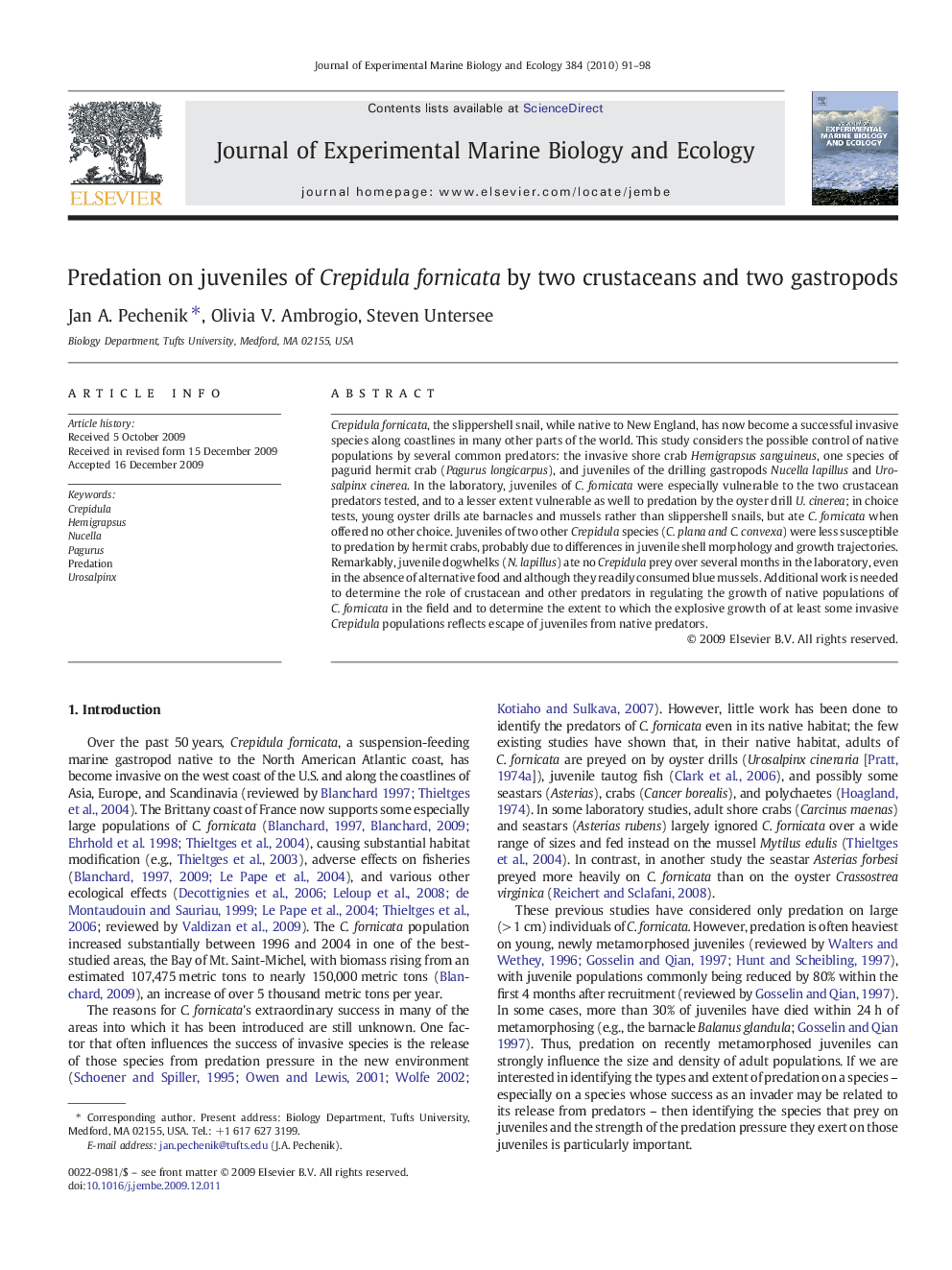| Article ID | Journal | Published Year | Pages | File Type |
|---|---|---|---|---|
| 4396646 | Journal of Experimental Marine Biology and Ecology | 2010 | 8 Pages |
Crepidula fornicata, the slippershell snail, while native to New England, has now become a successful invasive species along coastlines in many other parts of the world. This study considers the possible control of native populations by several common predators: the invasive shore crab Hemigrapsus sanguineus, one species of pagurid hermit crab (Pagurus longicarpus), and juveniles of the drilling gastropods Nucella lapillus and Urosalpinx cinerea. In the laboratory, juveniles of C. fornicata were especially vulnerable to the two crustacean predators tested, and to a lesser extent vulnerable as well to predation by the oyster drill U. cinerea; in choice tests, young oyster drills ate barnacles and mussels rather than slippershell snails, but ate C. fornicata when offered no other choice. Juveniles of two other Crepidula species (C. plana and C. convexa) were less susceptible to predation by hermit crabs, probably due to differences in juvenile shell morphology and growth trajectories. Remarkably, juvenile dogwhelks (N. lapillus) ate no Crepidula prey over several months in the laboratory, even in the absence of alternative food and although they readily consumed blue mussels. Additional work is needed to determine the role of crustacean and other predators in regulating the growth of native populations of C. fornicata in the field and to determine the extent to which the explosive growth of at least some invasive Crepidula populations reflects escape of juveniles from native predators.
